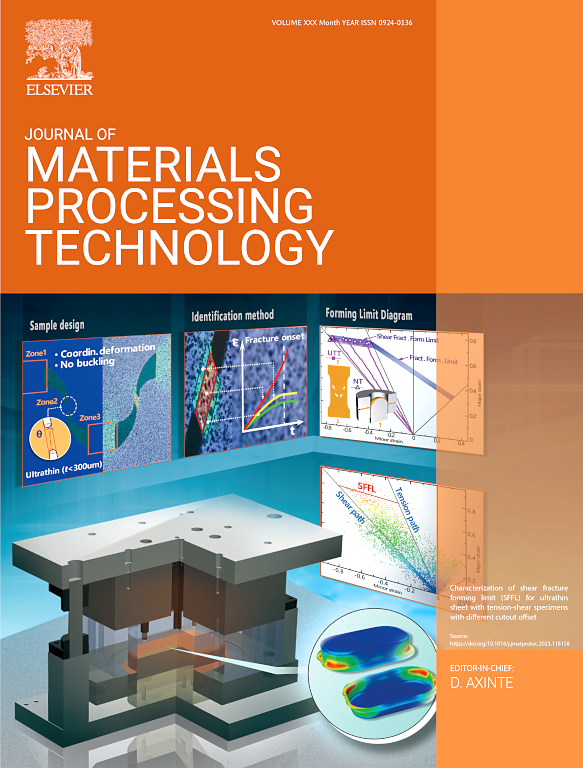Significantly improving mechanical properties of ultra-high strength steel joints via optimal in-situ post-weld heat treatment
IF 6.7
2区 材料科学
Q1 ENGINEERING, INDUSTRIAL
Journal of Materials Processing Technology
Pub Date : 2025-01-19
DOI:10.1016/j.jmatprotec.2025.118741
引用次数: 0
Abstract
By applying optimal in-situ post-weld heat treatment (PWHT), in-situ austenitization was achieved in the fusion line (FL) of ultra-high strength steel (2 GPa steel, tensile strength exceeding 2000 MPa) resistance spot welding (RSW) joint, and mechanical properties of the joint were significantly improved. In the fusion line of 7 kA weldment without in-situ post-weld heat treatment, the presence of a C-poor zone led to the formation of fine-lath γ-austenite and a decrease in dislocation density, resulting in the “hard-soft-hard” sandwich structure. The cracks of the 7 kA weldment propagated along the fusion line. The maximum force of 7 kA weldment was only 12.8 kN. The optimal in-situ post-weld heat treatment parameter (6 kA + 2 s) caused the re-partitioning of the C element and the formation of full martensite in the original fusion line, eliminating the “hard-soft-hard” sandwich structure. Consequently, the crack in 7 kA-(6 kA + 2 s) weldment no longer propagated along the fusion line. The maximum force of 7 kA-(6 kA + 2 s) weldment reached 22.2 kN. The efficient, accurate and optimal post-weld heat treatment process can eliminate element segregation and change the microstructure in the fusion line of ultra-high strength steels resistance spot welding joints, thereby altering the crack propagation path and significantly enhancing the mechanical properties of the joints.
求助全文
约1分钟内获得全文
求助全文
来源期刊

Journal of Materials Processing Technology
工程技术-材料科学:综合
CiteScore
12.60
自引率
4.80%
发文量
403
审稿时长
29 days
期刊介绍:
The Journal of Materials Processing Technology covers the processing techniques used in manufacturing components from metals and other materials. The journal aims to publish full research papers of original, significant and rigorous work and so to contribute to increased production efficiency and improved component performance.
Areas of interest to the journal include:
• Casting, forming and machining
• Additive processing and joining technologies
• The evolution of material properties under the specific conditions met in manufacturing processes
• Surface engineering when it relates specifically to a manufacturing process
• Design and behavior of equipment and tools.
 求助内容:
求助内容: 应助结果提醒方式:
应助结果提醒方式:


